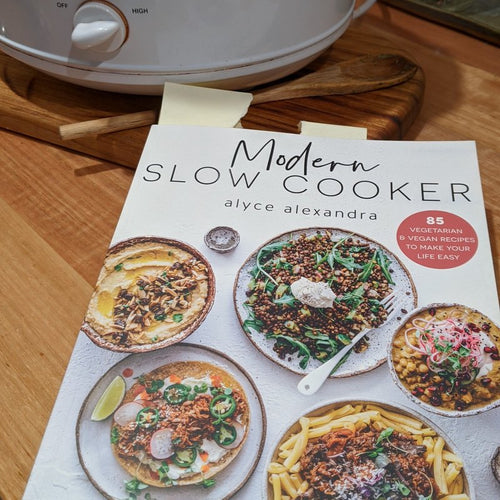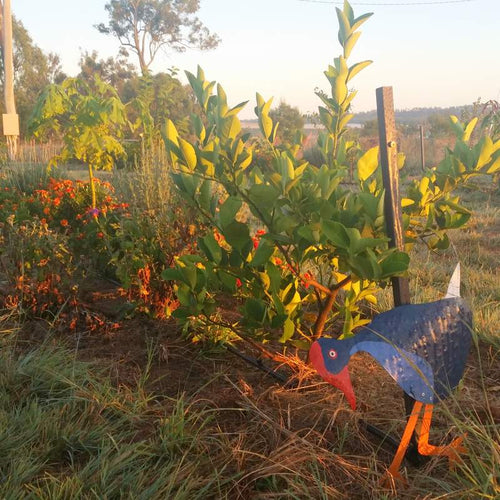Retrosuburbia - permaculture book review
As you know, I am a big fan of permaculture, I read a lot of books and blogs about permaculture, I listen to podcasts about permaculture and I try to use permaculture in all aspects of my life, particularly around the farm, but also in the house.
What is permaculture? Catch up on my introductory post back here.
To summarise, the way I see permaculture is using natural systems to do the work for you, everything from worms in the garden tilling your soil to passive heating and cooling the house, I'm always thinking about ways to use less of my own time and energy to get something done.

People often assume that you have to have acres and acres of land to "do permaculture" but if you think about it how I just described permaculture, you can use it anywhere on any scale. I get emails from people saying "I'm currently living in suburbs, but I'd really love to sell up and move the country one day". I try to be encouraging, if that is really your dream, then go for it! But if you're thinking that you have to be in a rural area to achieve self-reliance, you are under-estimating how much you can do in the city - and the more you practice and learn before you move, the better too!
David Holmgren's latest book "Retrosuburbia: The downshifters guide to a resilient future" (and that is not even an affiliate link because its not on Amazon!), is the manual that you need to see the potential of the suburban lifestyle.
Having lived in cities, towns, rural and semi-rural areas over the course of my life, I can see David's point. In a city or town, you have the density of people to intensify production, and also develop a local sharing economy. He is talking about neighbours all growing and swapping different produce. You also have access to lots of resources and services, like building materials and recycling collections, that you don't necessarily get in rural areas. And you can get away with using less energy, for example not needing to own (or regularly drive) a car due to public transport or active transport options. You are more likely to find suitable employment and/or not end up with a massive loan (although there are some VERY cheap houses out in small country towns too).
My advice if you think you would like to move to a rural area: see what you can grow in your own backyard first, explore all your options to retrofit your house and section, and then see if that is what you're looking for.
What's in the book?
Be prepared, it is loooong! This is the only part that disappointed me because I always whinge about Bill Mollison's Permaculture Designers Manual being too long, and usually David's books are more concise, but this one about matches it and half the problem is all the footnotes.
At least you won't feel like you have missed out on anything. However, in some places it does still feel a bit short on specific details. This book will be good to give you initial ideas and you'll have to do more in-depth research to figure out exactly how to implement them.
There are four main sections and a conclusion:
- Setting the Scene - this was an interesting explanation about why we should consider using the suburbs more effectively in a future with less energy availability.
- Built field - all about what you can do with your house in terms of heating, electricity, water, food storage, bushfire and sharing with other people.
- Biological field - soil and veges through to domestic animals and wildlife
- Behavioural field - ideas about how we life together in urban spaces, including transport, employment, finance, health and disaster planning.

What I like about it
Anyone can pick up this book and follow the logic and ideas to create their own sustainable suburban oasis (or even apply some of it in rural areas). You don't need to know or care about permaculture. You may pick up some permaculture principles throughout the book, but it is not essential to understanding the book.
The book covers a wide range of topics and includes case studies, which bring some of the ideas to life. If you are living in the suburbs with a vague sense of unease and wondering if you should do something to be more self-reliant, this book will be a first reference point to at least let you know what you CAN achieve in an urban area. You can assess your current living situation and decide what you could implement and then do further research on particularly applications.
There are plenty of beautiful photos and diagrams to help with visualising the concepts. Each section is colour coded. It is a very well-presented book, with thick pages that will survive many readings.

What I don't like about it
Its too long for me, I struggled to read the whole thing, and I read a lot! I worry that some people are not going to make it to the end! There are too many footnotes that do not add value, just adding even more words and pages. It is also a significant investment at $85. I can't help but think a shorter book would have been more affordable for more people.
Most of the examples are clearly from southern states. Some of the information will not apply well in sub-tropical/tropical areas and I don't know so much about arid zones, but I suspect they will have the same problem. While it is impossible to cover all the climates in Australia in one book, I have noticed this in permaculture and other house/garden design books that don't specify the climate that they are writing for.
If they at least state "this works well in a xyz climate" and you know that its different to your own climate, then you can test the assumptions and maybe tweak the design to match your climate. For example there is an entire chapter on bushfire, which is a risk for large parts of Australia, but threats such as cyclones, more common for northern QLD are not discussed. As always, it is important to be aware of your own climate and the risks and opportunities associated with it.
Overall reflections on Retrosuburbia
If you are in the suburbs and curious about what you can do with the space you already have - try to get this book from the library and see if it adds anything new for you. For many, these ideas will already be pretty obvious, it may just tie them together into a framework for you, it may bring up something totally new. If you think you're going to refer to it a lot, invest in your knowledge library, we might not have the internet forever!
I think it will be more relevant for those in VIC, SA and southern NSW, but may offer some ideas to those in other states and climates. Even if you're already living in a rural area, the sections on house and biology are all useful.
Have you read it? What did you think of Retrosuburbia?






















I borrowed it from the library. All up I have decided I’m not going to purchase it. I found it all very overwhelming in theory and not enough practicality. I also felt that our cold climate in Canberra, didn’t really fit their focus. I brought milkwood’s book instead, as my Christmas present.
This book is on my mental checklist, to borrow from the library, although I’m not sure I’ll get to it before Christmas. I find a lot of permaculture reading material quite heavy. Although loved Toby Hemenway’s, Gia’s Garden, for it’s brevity. While also not losing important details.
If you check out Happen Films on Youtube, and look for Abdullah House, this is one of the real life examples listed in David’s Book (I think). But it’s a lot more concise in it’s detail. Plus it’s great for visual learners. Here’s the link: https://www.youtube.com/watch?v=rFFSBzsPn0k
I’ve been meaning to email you Liz, for the order I received a few weeks back now. Love the honey! And was that a surprise Poppy soap bar you put in there for free too? It must be Christmas. :) Have some happy holidays, which are fast approaching now!
I got it out of the library so it was impossible to read it before I took it back. I would consider it a great reference book – like a text book that you would use when you want to
Retrofit something. It has some really good ideas that I think we could implement on our farm. I’m hoping I’ll get it as a Christmas present!
Leave a comment